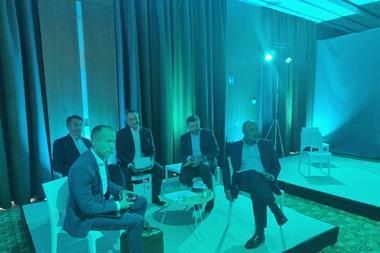Why alternative risk transfer solutions, such as captives, are compelling tools during a hard market - AXA XL
How has the global pandemic impacted captive utilisation?
The hardening market had already led to restrictions in the terms and conditions offered by traditional insurers and was driving the interest in captives. The impact of the COVID-19 pandemic has further increased the hardening market and had compounding effects on the use of captives, which can also complement the coverage provided by the market. In addition, in many cases the operational management of captives has been upgraded for greater efficiency.
How does a captive complement global programmes and how do they provide access to the reinsurance market more directly?
For many of our international clients, a centrally coordinated global programme is the most efficient way to manage their worldwide exposures. Using a captive as part of their programme can be an effective way for them to retain some of their risks – usually the first layer of their exposure – and to get a handle controlling their losses.
This allows captive owners to take meaningful retentions at the parent level – rather than at the local level and, in turn, to have greater transparency of the cost of their risk, globally.
Some clients use their captives increasingly to fill gaps in the traditional insurance market – lack of capacity or coverage in some area, for instance – and to have access to the reinsurance market, which allows them, in some cases, to transfer global stoploss or even higher layers for some of their risks.
How can a captive be used to manage emerging risks?
We have seen in recent years a steady increase in clients expanding the range of coverages written in their captives beyond standard property and casualty risks, to include emerging risks.
On one hand, this allows parent companies to cover risks that are uninsurable on the traditional markets, whether because no solution exists, or because the market has little appetite for it. On the other hand, it is a great way for captive owners to learn more about these risks by managing them directly and learning from their claims experience.
Why and how do you combine a captive and a parametric solution?
We are seeing an uptick in interest from captive clients with regards to parametric solutions, which are well-suited to natural-catastrophe risks – including climate risk and earthquake.
Embedding parametric coverages into captives have several benefits for captive owners. They are not only attractive because they provide speed and certainty of payment, but also enable captives to accept risks that they would not ordinarily be able to underwrite, as well as offset some of those risks that they may otherwise find hard to place in the traditional insurance market.
It allows them to build up more powerful data on those risks and become an even more useful tool in their owners’ overall risk management strategy.
Marine Charbonnier is Global Programmes & Captives director, Europe for AXA XL.
Blog: FERMA Talks Conference 2021 Daily News Summary
- 1
- 2
 Currently reading
Currently readingFERMA Talks: Turning to ART
- 3
- 4
- 5
- 6
- 7
- 8
- 9
- 10





























No comments yet